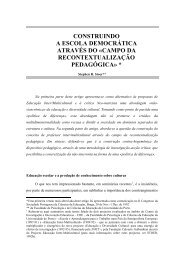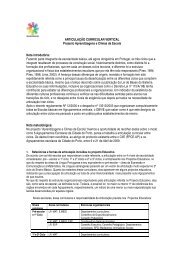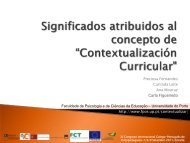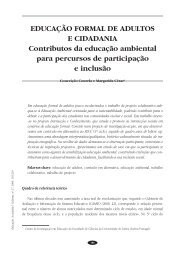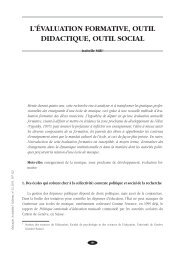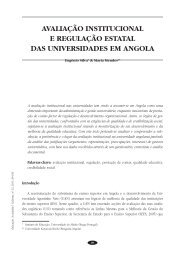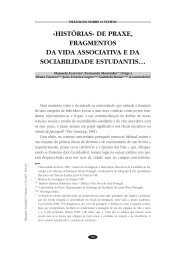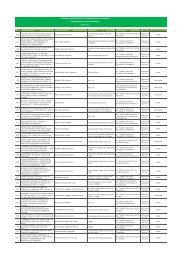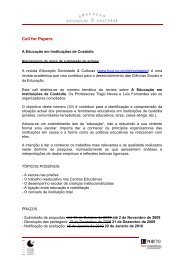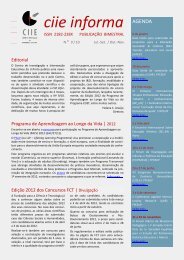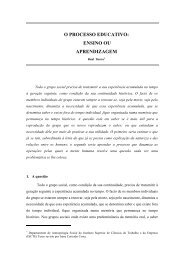REFLECTINGON AN ACADEMIC PRACTICE TOBOOST GENDER ...
REFLECTINGON AN ACADEMIC PRACTICE TOBOOST GENDER ...
REFLECTINGON AN ACADEMIC PRACTICE TOBOOST GENDER ...
Create successful ePaper yourself
Turn your PDF publications into a flip-book with our unique Google optimized e-Paper software.
Nevertheless,Awareness does not automatically produce appropriate responses for the action. That is, «awareness» easilyleads to reflection without action. (…) «Critical consciousness» facilitates a contextualized analysis of problematicsituations, which allows people to transform that reality. (…) Transformation, therefore, results from a criticalperspective. (Colás & Jimenez, 2006: 423)This, in our opinion, has to be directed also on ourselves.In that sense, the commitment of feminist pedagogies with self-reflexive practices fightingagainst our own sexist, racist homophobic barriers (Shrewsbury, 1993) requires to stimulatestudents to relate curriculum with their own life (Klebesadel & Kempfert, 2004) according to apolitical practice that aims at producing social and educational changes (Mayberry, 2001). Inorder to do that and to prepare teachers on gender equalities, Freixa, Fuentes-Guerra, andLuque (2007) insisted in the need of offering students special tools to analyze their professionalpractices and to critically reflect in the way in which beliefs influence teaching dynamics.According to that, following Campbell (2002) suggestions, our own political commitmentsbring us to develop a «collective, experiential, egalitarian, interactive and empowering processthat connects rational and irrational dimensions with the affective once facilitating cooperativelearning» (Luxan & Biglia, 2011: 156).In conclusion, the question would be to support future schoolteachers to become aware oftheir gender stereotypes and offering tools to self-reflect on the influence that such stereotypeshave in their teaching practices (Giraldo & Colyar, 2012). However, as Bondi (2009) declares, isnot easy to teach reflexivity, though an ongoing personal and collective work can help in orderto learn how to put it in practice. According to Cook-Sather, we can try to engage with that bycreating opportunities for students to gain critical distance on their experiences and inviting them to analyzethose experiences with an eye toward changing them are key components of student voice work as well. Likecritical and feminist pedagogies, student voice work supports the interrogation by the oppressed of their ownexperiences and sees this interrogation as the means by which to come to an understanding of their power asknowers and creators of their world and, in turn, as potential transformers of their world. (2007: 395)For that reason, as we will detail later, we developed a process starting from students’ freewritten accounts, going through students’ personal systematic and critic analysis of them toend with a collective debates to redefine categories, understanding and stereotypes in orderto bring an ongoing process of both collective and self-reflexivity. Using Haraway (1997)metaphor, we can say that students’ analysis is diffracted, as the class is crossed by new lightswhich, by working on them, will diffract them again so that each student will be affected bysome of those new lights and diffract them again and so on…113



